The Ford F-150 Tremor is for people who want an F-150 that looks like it can do some moderate off-roading and actually has the hardware to back that up. I spent a few minutes behind the wheel of one; here’s what I thought.
Back when I was an engineer at FCA, I had to do all my off-road validation testing either at the Chelsea Proving Grounds (an hour away) or at an off-road park (none of which were anywhere close, really). “How is it that all of these OEMs are developing off-road vehicles, but there’s no good place nearby to put them to the test?” I wondered.
Someone capitalized on this idea a couple of years ago when they built Holly Oaks ORV Park. Not only has it become a place where automakers can do light to medium-difficulty off-road testing, but it’s also a place where they can host journalists for short off-road reviews.
Subaru used this spot a few months back, and demonstrated to me how scary the Outback Wilderness’ Hill Descent Control can be on loose downhill grades. And about a month ago, Ford inviting a few journalists to spend a half an hour or so behind the wheel of the brand’s new F-150 Tremor.
What Is It?
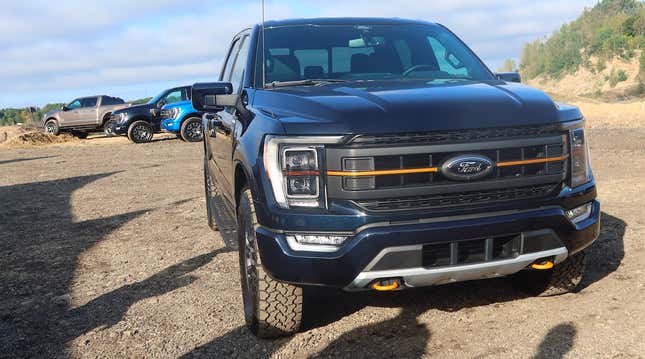
You may be wondering what “Tremor” means. After all, Ford already has 6.02 *10^23 off-road trims including Raptor, Timberline and Badlands. Plus there’s the whole Bronco brand, and packages like FX4, Sasquatch, and — confusingly — Tremor. It’s a bit much, but then, so is America’s thirst for off-road vehicles.
For the F-150, Ford has branded Tremor as basically a moderately-equipped F-150 trim level that offers unique styling and slightly more off-road capability than you’d get if you outfitted a medium-trim F-150 with the FX4 off-road package.
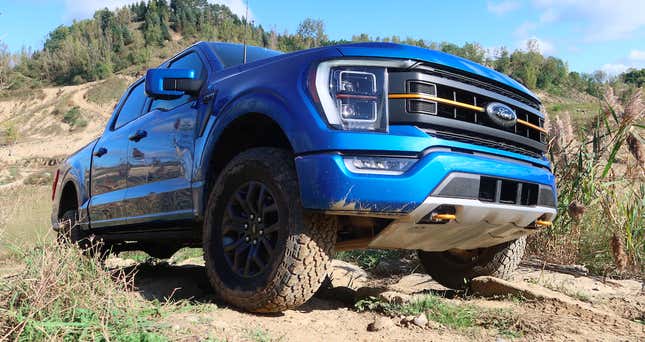
The styling differences are few, but they’re impactful. “Active Orange” accents abound. There’s that strip across the black grille (which is unique for the Tremor, and features a blacked-out Ford oval); there are the front tow hooks; there’s badging on the bedsides, fenders, and tailgate; and there are orange details on the truck’s interior.
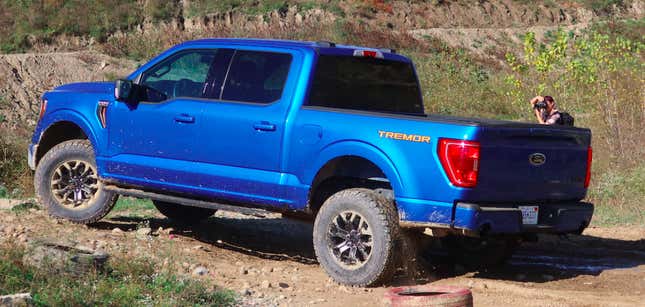
The hood is different, too. Notice how on the Tremor it’s rounded on the front edge:
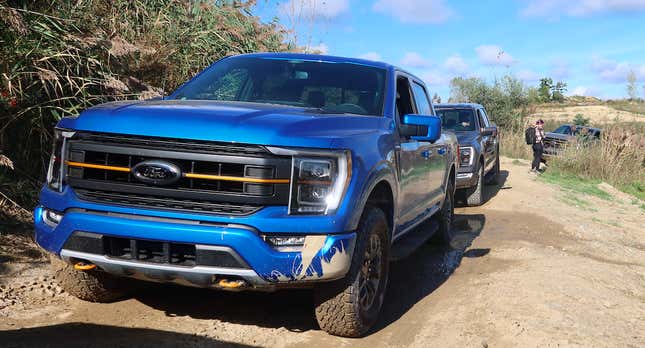
The standard F-150's front edge is a bit more blunt:
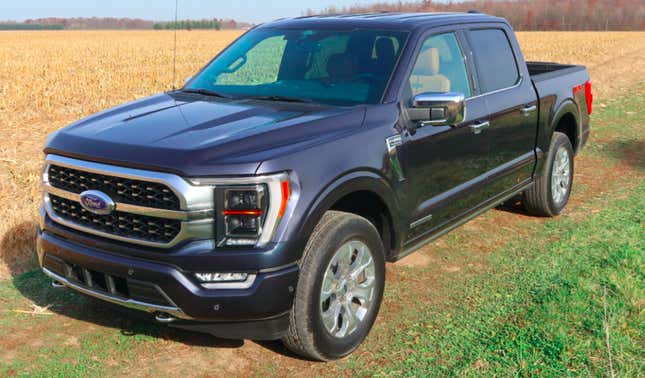
In addition, the F-150 Tremor’s rear bumper has cutouts for a dual exhaust setup, and “unique” matte black wheels hold the tires to the hubs.
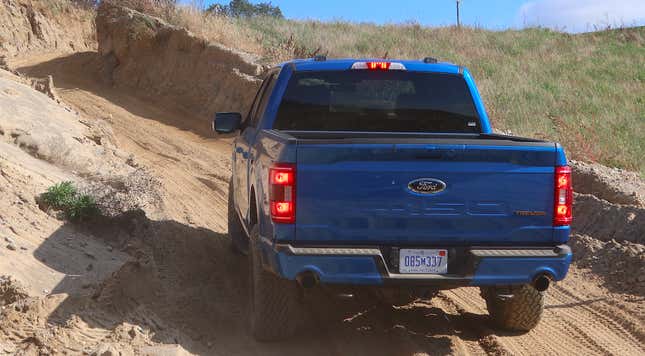
Those 33-inch General Grabber all-terrain tires are critical styling elements, working with the front bash plate to give the truck a rugged look.
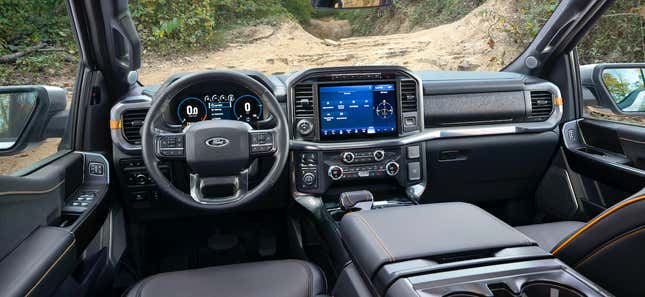
Speaking of off-road hardware, there are Raptor-esque “off-road running boards,” and though they appear to be made of bedliner-coated steel, they’re not frame-mounted, and they’re not flat on the bottom. So I wouldn’t use them as rock sliders, though I have no doubt they could prevent some rocker-panel damage in some moderate off-road scenarios.

Here’s a closer look at the Raptor-ish front bash plate and the orange front tow hooks:

In addition to the running boards, front bash plate, tires and exterior/interior styling elements, the main bits that distinguish the Tremor from an FX4 package-equipped F-150 are its wider overall stance, about an inch of extra ground clearance, and retuned springs with new dampers.

Contributing to the additional ~1-inch of track width is a different steering knuckle design, and the additional inch or so of running ground clearance comes is a result, in part, of taller springs up front (the truck is one inch taller up front) and a spacer below each rear leaf spring pack (the truck is 1.5 inches taller out back).
As for software, the F-150 Tremor also adds Trail Control, which is basically an off-road cruise control for low-speeds. Plus there’s “Trail One-Pedal Drive” that automatically slows the vehicle down when off the gas pedal to allow for controlled single-pedal low-speed driving and “Trail Turn Assist,” which brakes the inside rear wheel to help the truck navigate a tight turn.
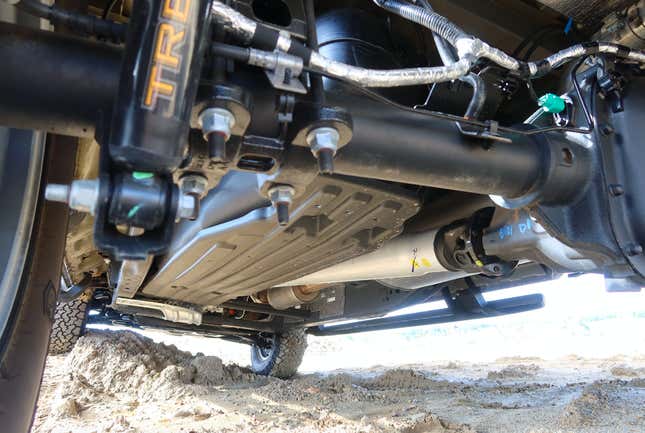
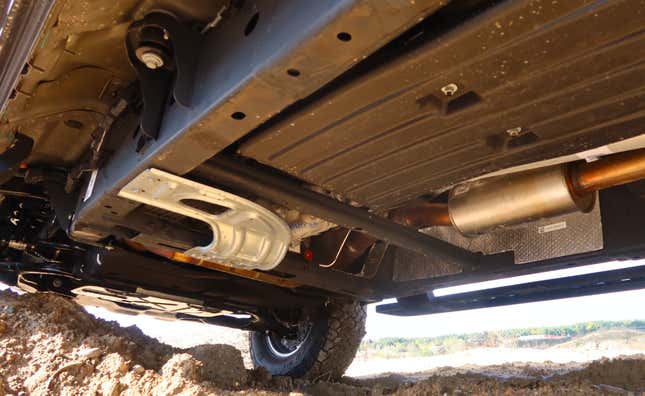
Other underbody protection besides that front bash plate is shared with the FX4; that protection includes a fuel tank skid plate, transfer case skid plate, and front diff skid plate. Like the FX4 trucks, the Tremor gets a locking rear differential, though unlike the FX4, there’s an available Torsen limited slip front differential.
Basically, the F-150 Tremor is a 3.5-liter Ecoboost-equipped F-150 FX4 with different tires, a slightly different stance (wider, taller), some unique styling elements inside and out, a bit more off-road software, and front bash plate and running boards.
How Is It Off-Road?

I only spent about 15 minutes off-roading the F-150 Tremor, but it was enough for me to get a general feel for its capabilities. The truck is big, but its 27.6 degree approach angle and 24.3 degree departure angle aren’t horrible for a truck, and neither is the ground clearance of nearly 11-inches.
I was never really worried about keeping the chin and rear hitch from hitting the ground; I was mostly concerned about beaching the truck while cresting a hill, as the 21.2 degree breakover angle leaves a lot to be desired.
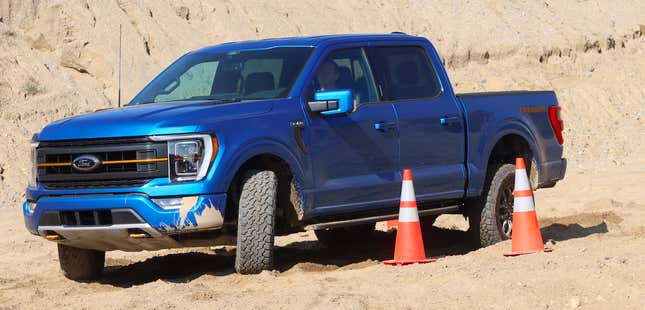
Geometry is of course the most important attribute of an off-road vehicle, and in that area, the F-150 isn’t great simply by virtue of being a full-size truck. But in the area of traction, the F-150 is excellent; the solid rear axle allows for good articulation (keeping the tires on the ground), the tires grip beautifully, and the locking rear differential is extremely quick to engage and effective.

I can’t speak much about the pedal calibration, which is an important area when navigating technical off-road trails. But that’s okay, because I was using Ford’s Trail Control off-road cruise control system, which was — aside from a single instance of it stalling the truck (i.e. the truck refused to keep driving forward until I pressed the pedal) — fantastic.
The truck will roll along at whatever speed you set; then when it hits an obstacle, the vehicle will slow down as the motor builds torque gradually until it ascends whatever is in your way. Ford’s system seems as well-calibrated as Toyota’s Crawl Control.
Trail Turn assist, shown in the clip above, does help the truck navigate tight situations, though it is a bit odd, as it requires one to “power through” the brakes — specifically the one holding the inside rear wheel from moving. I could see myself using this feature in a pinch, but not regularly on a tight trail.
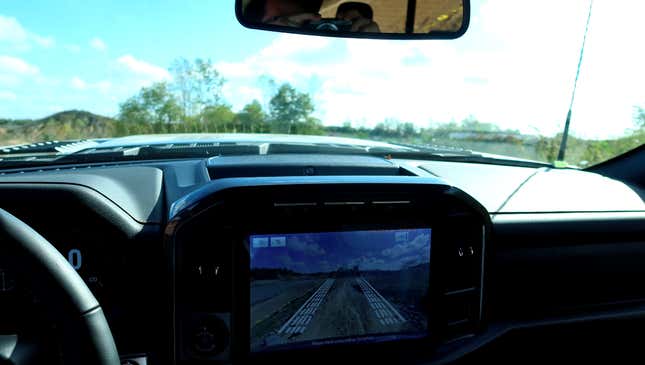
The clear front-facing camera is clutch, with its button front-and-center above the infotainment screen; without the camera, seeing what’s ahead over that hood can be tricky, especially while climbing inclines.
The video above gives you an idea of the difficulty of the off-road trails I took the F-150 Tremor through. Watch that rear axle float over the rocks; it’s nice and flexy, and overall, I’ll say that the suspension felt soft and comfortable on the trails both at low and high speeds in a straight line, though I have my doubts about how well it would handle cornering.
I wish I could go into further detail about the Tremor’s off-road chops, and really, I wish I could write a more thorough, fleshed-out review. But the drive was too short, and on trails that were too easy. I will say, though: The truck has the hardware to handle moderately tough trails with ease.
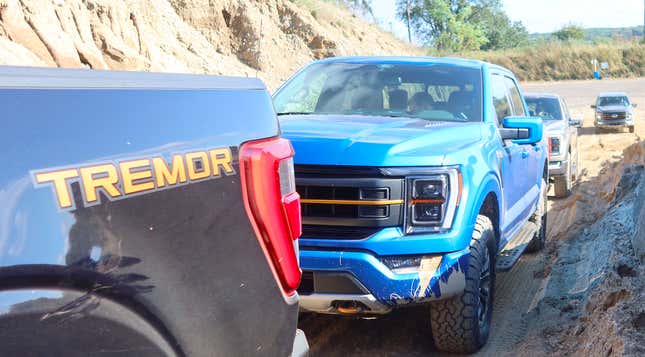
The question of whether it’s worth its >$51,200 base price is something you’ll have to decide based on how often you go off-road, and how much that off-road “look” means to you. The base Tremor comes with single-zone climate control and manual cloth seats; a Lariat optioned up with the Tremor’s 400 horsepower 3.5-liter Ecoboost V6 gives you power heated and vented leather seats and dual-zone climate control for about the same price, but minus the off-road capability. It’s a tradeoff.
You could option up a Crew Cab XL with the FX4 Package and 3.5-liter and come out with a price lower than the Tremor’s with similar options and not that much of a sacrifice in off-road capability. Though it wouldn’t look as cool. And let’s be honest with ourselves, looking cool is what most truck buyers are after.
This story has been updated to mention that Ford does offer an optional limited slip front diff on the Tremor.